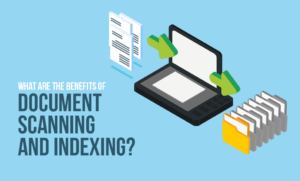It is no question that digitization in various industries will remain to be a topic of interest in the coming years while the use and handling of physical documents will eventually die out. Naturally, digitization in governmental institutions may be of the most importance given the tremendous number of documents flying in and out their offices every day. Efficiency in transforming those physical documents into electronic ones must play great role here.
While Optical Character Recognition or OCR has proven to be up to the task over the years saving time and human energy, it is important to ask does it face any challenges when it comes to scanning different types of documents that don’t necessarily contain basic text or numerical figures? The answer is yes but, understanding more about how OCR works its way through those obstacles will help such institutions better recognize what tools will come more in handy and are indispensable to their document management system.
Governmental entities and legal authorities print out documents on regular basis to issue out contracts, wills, invoices, certifications, and so much more. Those documents usually have a signature or a stamp on them to warrant their legality and validity. Using OCR to scan those documents into digital ones will work with all the text on them just fine but when it comes to that stamped area things can get tricky.

As a start, the manual extraction of those stamps consumed an amount of time, and many errors were caused in the process. With modern technological advancements the process has evolved using digital systems such as OCR to capture data and scan those stamps with minimum error and time consumption. Even though platforms such as OCR have to the rescue in such matter, difficulties in the automated stamp recognition process still last. Just like handwriting, there is no specific and unified template for those unique objects. The graphics and text a stamp contain makes it unique in nature as those elements can differ in color, shape, quality, and imprints. This is why it is important to understand that a basic OCR extraction process will face difficulty in detecting and classifying into a document management system such variations. When an OCR engine scans stamps, the text only is recognized from the shape or image it is reading and the object as a whole is not properly transformed. Traditional OCR distinguishes words from other visual features in a file using patterns and correlation. As a result, the scanned documents containing stamps may come out with overlapping background text, text is randomly distributed across the document, and text is visible around the circular boundaries of a stamp. Such threats to an accurate and efficient extraction of data can be overcome with AI-driven OCR.
An important aspect of an AI-driven OCR engine to boost the accuracy rate of a scanned document that contains anything other than text is image preprocessing, including rescaling, noise removal, rotation, and so on. What happens in the process in detail is that an OCR engine consumes a large number of scanned documents that contain unstructured objects, in this case stamps. Those stamps are then identified from the documents by extracting critical information that they are made of such as date, logo, entity name and so on. As the process proceeds the AI-driven technology can copy human judgement by identifying cognitive patterns leading to advanced levels of accuracy and precision than a typical human user or manual reviewing.
In short, such advanced technology can extract characteristics from stamps more efficiently with less time consumed and with more accuracy ensuring no disastrous errors produced in the process. It can also retrieve data from stamps that are overlapping with a signature or text in the scanned document. In order to obtain precise data, the module additionally optimizes the stamps by reorienting them. With all of those AI capabilities proving essential to businesses and institutions of the various industries, the decision to adopt them in every business need will lead to better outcomes while preserving quality.






